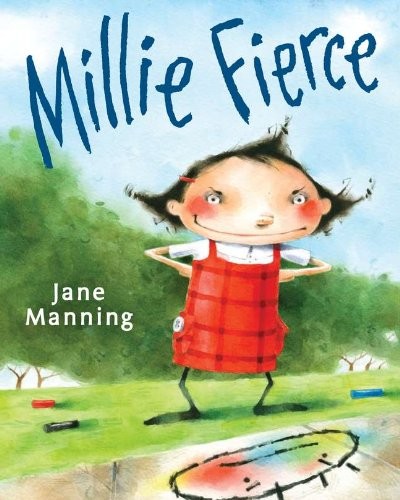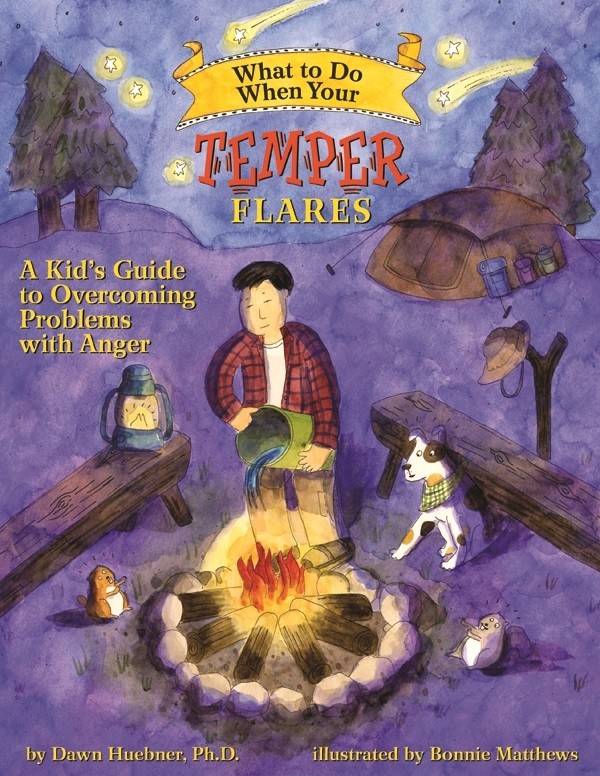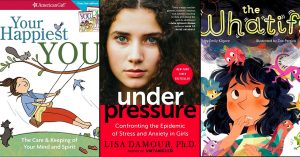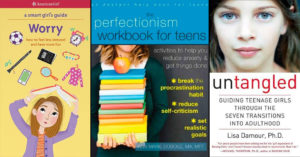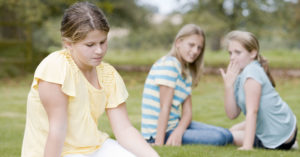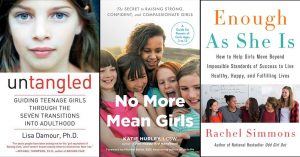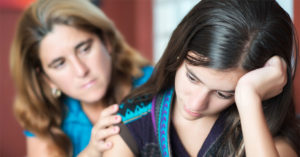"We are so busy teaching girls to be likable that we forget to teach them that they have the right to be respected."
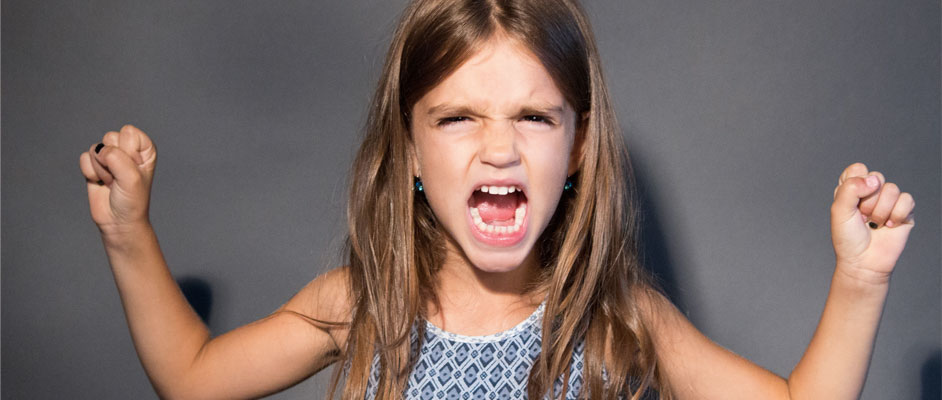 Most parents talk to their children about their emotions, but there's one emotion that people often leave out when talking to girls: anger. "I don’t remember my parents or other adults ever talking to me about anger directly," observes Soraya Chemaly, author of Rage Becomes Her: The Power of Women's Anger, "Sadness, yes. Envy, anxiety, guilt, check, check, check. But not anger.... While parents talk to girls about emotions more than they do to boys, anger is excluded." In fact, from an early age, parents, caregivers, and teachers expect girls to regulate their emotions more effectively than boys, teaching them that expressing "negative" emotions like anger is socially unacceptable. In this blog post, we'll explore why it's important to let girls be angry – and how to teach girls to channel their anger productively.
Most parents talk to their children about their emotions, but there's one emotion that people often leave out when talking to girls: anger. "I don’t remember my parents or other adults ever talking to me about anger directly," observes Soraya Chemaly, author of Rage Becomes Her: The Power of Women's Anger, "Sadness, yes. Envy, anxiety, guilt, check, check, check. But not anger.... While parents talk to girls about emotions more than they do to boys, anger is excluded." In fact, from an early age, parents, caregivers, and teachers expect girls to regulate their emotions more effectively than boys, teaching them that expressing "negative" emotions like anger is socially unacceptable. In this blog post, we'll explore why it's important to let girls be angry – and how to teach girls to channel their anger productively.
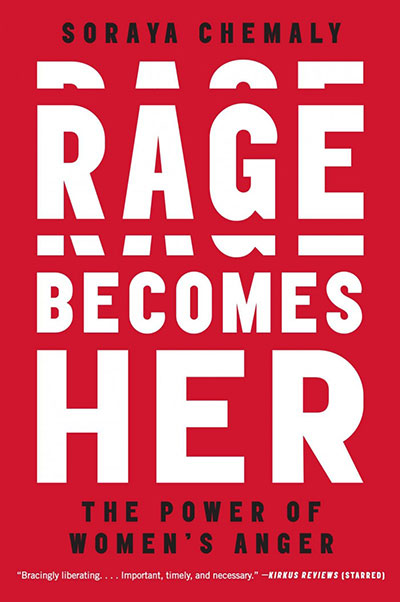 Most girls and women understand the risks they take when they become angry,” writes Chemaly. “No matter how justified, appearing angry won’t do her any favors and will actually undermine people’s perception of her competence and likeability.” Instead, “girls are more likely to learn that their feelings of anger, no matter the reason they have them, are ‘wrong’ and out of sync with their identities as girls.” So when we leave anger out of our girls' emotional toolbox, they may struggle to stand up for themselves, even when a situation deserves their anger. "We are so busy teaching girls to be likable," asserts Chemaly, "that we forget to teach them that they have the right to be respected."
Most girls and women understand the risks they take when they become angry,” writes Chemaly. “No matter how justified, appearing angry won’t do her any favors and will actually undermine people’s perception of her competence and likeability.” Instead, “girls are more likely to learn that their feelings of anger, no matter the reason they have them, are ‘wrong’ and out of sync with their identities as girls.” So when we leave anger out of our girls' emotional toolbox, they may struggle to stand up for themselves, even when a situation deserves their anger. "We are so busy teaching girls to be likable," asserts Chemaly, "that we forget to teach them that they have the right to be respected."
Repeatedly having to swallow their anger, she adds, can also end up altering girls’ understanding of their own emotions. Eventually, “girls lose even the awareness of their own anger as anger... Adaptable girls find socially acceptable ways to internalize or channel their discomfort and ire, sometimes at great personal cost.” And, the impact over time is not just emotional but also physical: "Unresolved anger contributes to stress, tension, anxiety, depression, and excessive nervousness. It is now estimated that 30% of all teen girls have anxiety disorders."
Girls’ anger often grows as they reach their teens, because studies show that girls and women are more likely to feel anger about injustice, powerlessness, and other people’s irresponsibility – all things they confront head on as they approach adulthood. “They begin to see the effects of gender–based double standards that fly in the face of everything they’ve learned so far about their abilities, equality, and potential,” observes Chemaly. “Street and sexual harassment are common occurrences, including at school. They learn about sexual assault, if they have not already been assaulted (43% of assaults happen before the age of 18). They adapt to having to restrict themselves.... They are navigating the stressful tension between managing their own sexuality and the crush of women’s pervasive sexual objectification." In other words, “while anger in girls and women is overwhelmingly portrayed as irrational, it is, in fact, completely rational.”
Helping Girls Understand Their Anger
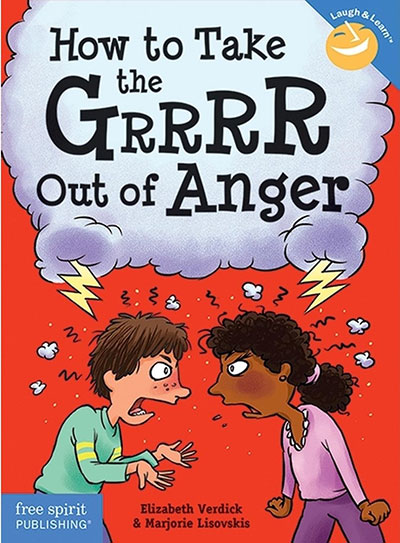 So how can you raise girls who have a healthy relationship with their anger? The first step is to let them express it, even if it's tough to watch or hear. "Anger is an uncomfortable emotion," acknowledges Katie Hurley, a child and adolescent psychotherapist and author of No More Mean Girls: The Secret to Raising Strong, Confident, and Compassionate Girls. "It triggers us. Your instinct [as a parent] is, 'I don’t want to feel this right now, I’ve got to stop this.'" But if you reject their anger completely, you teach girls that it's not valid, and that they can't express it, even to you. Instead, validate their feelings but set limits on what are appropriate ways to express it: "I know you're angry that you can't have another cookie, but it's not okay to yell," helps kids separate the way they feel, which is okay, from the way they're acting, which is not.
So how can you raise girls who have a healthy relationship with their anger? The first step is to let them express it, even if it's tough to watch or hear. "Anger is an uncomfortable emotion," acknowledges Katie Hurley, a child and adolescent psychotherapist and author of No More Mean Girls: The Secret to Raising Strong, Confident, and Compassionate Girls. "It triggers us. Your instinct [as a parent] is, 'I don’t want to feel this right now, I’ve got to stop this.'" But if you reject their anger completely, you teach girls that it's not valid, and that they can't express it, even to you. Instead, validate their feelings but set limits on what are appropriate ways to express it: "I know you're angry that you can't have another cookie, but it's not okay to yell," helps kids separate the way they feel, which is okay, from the way they're acting, which is not.
The distinction about feelings versus behavior is an important one. Anger is "a healthy emotion that, as humans, they have the right to feel and express," Chemaly says, but we shouldn't give anyone "girls or boys, a pass for violent, disruptive, or entitled behavior." Catherine Steiner-Adair, an expert in girls’ development and author of The Big Disconnect, says that between grades four and eleven many kids feel overwhelmed when they get angry and choose poor ways to show it. "They say bad things, like 'I hate you.' 'You’re the worst mother in the world.'" she explains. "You have to get over that and help them get to a place of self-regulation."
As they grow older, we also need to watch for how girls may conceal or misdirect their feelings, adds Chemaly: “Sarcasm, apathy, and meanness have all been linked to suppressed rage. Troublesome behaviors, such as lying, skipping school, bullying other people, even being socially awkward are often signs that a teenager is dealing with anger that they are unable to name as anger.”
However, it's important to remember that kids can't learn effectively when they're angry, so parents need to talk about anger as part of a general discussion about emotions and by introducing them to children's books about understanding and emotions. Just like you would discuss who you can talk to when you feel sad, or how to calm down when you're feeling to silly and giggly in class, parents can give kids strategies to manage their anger, from slow, deep breathing to going for a walk or playing some basketball while they cool down. "Girls need to know – and should be told explicitly – that it's alright to feel anger," Chemaly argues. "Understanding and managing anger can be part of larger childhood lessons about resilience, empathy, and compassion."
Helping girls express their anger in Healthy Ways
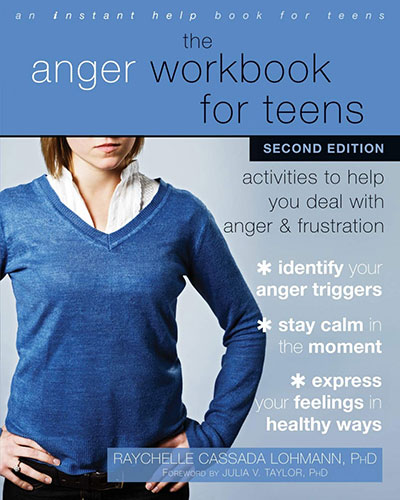 As part of a discussion about anger, it's helpful to give kids a framework for talking about their anger with the person who caused it. Some useful steps might include stating your commitment to work things out, describing how their action made you feel, and clearly stating what you need instead: "You're one of my best friends, but when you made fun of my glasses, I was really hurt. Please don't do that again." You can also remind her that, in a positive relationship, the other person will want to find a resolution. "When a girl or woman is angry, she is saying, 'What I am feeling, thinking and saying matters,'" explains Chemaly. "If you are in a relationship where you can’t say, 'Hey, this is important to me,' what good is that?"
As part of a discussion about anger, it's helpful to give kids a framework for talking about their anger with the person who caused it. Some useful steps might include stating your commitment to work things out, describing how their action made you feel, and clearly stating what you need instead: "You're one of my best friends, but when you made fun of my glasses, I was really hurt. Please don't do that again." You can also remind her that, in a positive relationship, the other person will want to find a resolution. "When a girl or woman is angry, she is saying, 'What I am feeling, thinking and saying matters,'" explains Chemaly. "If you are in a relationship where you can’t say, 'Hey, this is important to me,' what good is that?"
This model will also help prevent girls from falling into "mean girl" behavior like complaining to other friends rather than addressing the person directly. "Boys are taught to go right up to a person and say, 'Hey, what’s up with that?'" says Steiner-Adair. "Girls get a very confusing message that if you directly confront somebody, that’s 'not nice,' so girls are taught to tell everybody else other than the girl they are upset with." Media often displays this kind of unhealthy behavior as normal, so she suggests watching popular tween and teen shows with girls so that you can talk about "the misogynistic through lines when female protagonists express their anger and how they are responded to."
Of course, what you do is the most powerful lesson of all: you can't tell her not to slam her door if you slam your own! When you're angry, be mindful of how you choose to express it. Model talking through disagreements with family members (including her) and taking a break when you can feel your emotions getting the best of you. Make sure she sees that you don't just vent about the things that make you angry: you also act on them. That may mean talking about what you did when a colleague took credit for your work or why you wrote a letter to your representative. All of these will help her see anger for what it is: an emotion that points to a problem, and gives you the passion to work towards fixing it.
Finally, Chemaly points out, we need to teach girls that, if their anger is justified, they can channel it to work for real change: “Women who make less than their male peers, for example, are four times more likely to suffer from anxiety and 2.5 times more likely to suffer from depression. Imagine what would happen if they could get angry instead?” Mara Wilson, the former child actor best known for her roles in Matilda and Mrs. Doubtfire, echoed this sentiment in an article she wrote about the potential of a generation raised to harness their anger.
"All my life I’d wondered where the other angry girls were," she reflects. "I spent so many years trying to fight my anger, to hide it, and that never worked. I don’t think it’s possible to ignore anger, and I don’t think it can be fought. But it can be controlled, transformed, used. It can be a tool. Anger can inspire art, and anger fuels activism. What if we knew girls could be angry? What if we showed them how to use it? What if we let them know that they weren’t alone? ... [I]n dark times, our inner fire glows brightest."
Books And Resources To Teach Girls About Anger
The Feelings Book
The Feelings Book
Sometimes it’s hard to name a feeling with a single word; sometimes, it’s easiest to explain how you feel by saying what it makes you want to do! In this book, familiar emotions like happy and sad are side by side with phrases like “Sometimes I feel like standing on my head.” Parents can use these phrases to help kids start identifying more complex feelings — maybe you feel like wearing funny underwear because you’re feeling silly and excited today! Fans of Parr’s artwork can also get this set of Feelings Flash Cards to extend the conversation.
My Many Colored Days
My Many Colored Days
This unique book from beloved children’s author Dr. Seuss’ provides a concrete way for children to talk about their emotions. Each mood is matched with a color: black days are mad and loud, yellow days are busy and buzzy, green days are cool and quiet. And, of course, some days include a bit of everything! This charming, reassuring, and beautifully illustrated concept book is available in both paperback and board book editions, so even the youngest children can enjoy.
Sometimes I'm Bombaloo
Sometimes I'm Bombaloo
The feeling of anger or frustration running out of control can be downright scary for kids. Katie’s temper makes her feel like a totally different person, and Bombaloo, who uses fists and feet instead of words, is a frightening person to be. Fortunately, firm but caring people in Katie's life ensure that Bombaloo gets both the time to calm down and the love that she needs to turn into Katie again. And once that happens, Katie knows she can find ways to make up for the mistakes she made.
In My Heart: A Book of Feelings
In My Heart: A Book of Feelings
Happiness, sadness, bravery, anger, shyness...our hearts can feel so many feelings! And those emotions often come with physical sensations, too — happiness might make you feel like you can take off into the sky, while sadness might make you feel heavy and slow as an elephant. In lyrical language, this book introduces toddlers to a wide variety of emotions. Kids will enjoy the playful illustrations and the die-cut heart that travels through the whole book, reminding them that they can find their emotions everywhere.
Millie Fierce
Millie Fierce
Kids also need to learn to draw the line between anger that’s out of control and anger that’s justified — and appropriately expressed. Millie begins her story a little too far on the mild side — people don’t listen to her, or notice when they’ve done something that hurts her feelings. But when she decides that the solution is to become fierce, Millie ends up swinging too far the other way and ends up acting downright monstrous and mean. When she’s confronted with the consequences of being too fierce, Millie finds a happy balance: nice enough to apologize, but fierce enough to stand up for herself.
Anger Management Skills Workbook for Kids
40 Awesome Activities to Help Children Calm Down, Cope, and Regain Control
Anger Management Skills Workbook for Kids
40 Awesome Activities to Help Children Calm Down, Cope, and Regain Control
Learning to control and express your emotions doesn't come easily for all kids — especially when frustration or anger makes them feel like they want to blow! In this engaging workbook, kids will use playful activities to learn the essential skills they need to manage angry emotions. Kids will practice breathing and movement excercises to help them feel calmer, reframing methods that help them rethink what they're angry about, and problem-solving techniques to find good resolutions to situations that make them mad. They'll also learn social skills that help them interact with family members, friends, and teachers when big emotions threaten to take over. This positive, encouraging book will build skills kids will use for a lifetime.
Mad Dragon: An Anger Control Card Game
Mad Dragon: An Anger Control Card Game
Learn to calm your Mad Dragon with this game full of useful tips! Mad Dragon plays like UNO, with players racing to get rid of their cards. With this fast-paced therapeutic card game, kids can learn to control their anger in the moment, practice 12 effective anger management techniques, understand what anger feels and looks like, learn that they have choices about how to express anger, and much more. As kids play, the cards will prompt interesting discussions and get them talking about strategies that work for them. It's a unique option to incorporate anger management techniques in a playful way!
What to Do When Your Temper Flares
A Kids' Guide to Overcoming Problems with Anger
What to Do When Your Temper Flares
A Kids' Guide to Overcoming Problems with Anger
Anger on its own isn't bad: that spark of anger can provide the warning and motivation to change something that's not right. But when anger flares up, kids can feel like it is too big and too fast to stay in control. In this book from the What-to-Do Guides series, kids (and their parents) learn a series of cognitive-behavioral techniques that calm anger without suppressing it, so that kids can learn effective ways to deal with the things that make them angry. Encouraging examples and fun illustrations engage kids in the exercises, and empower them to take charge of their anger and channel it to achieve their goals.
How to Take the GRRR Out of Anger
How to Take the GRRR Out of Anger
When you're angry, you don't think the same way you do when you're calm, and you may do or say things that you regret later — but if you understand how to express your anger in a healthy way, you will feel more in control. This book helps tweens recognize the physical signs of anger, and also provides examples of the kinds of things you might thoughtlessly say or do when you're angry, both in person and through text or social media. Then, it provides tips for how to calm anger, whether you're just recognizing your rising emotion or you're already in the thick of an angry outburst. With its accessible and encouraging advice, this book will give kids confidence that they can manage their anger.
The Feelings Book: The Care & Keeping of Your Emotions
The Feelings Book: The Care & Keeping of Your Emotions
Once kids hit their tweens, emotions start to become more complicated: not only are there more shades of emotion to experience, but rapidly changing bodies and minds also lead to erratic and sometimes upsetting moods! This book from the American Girl Library focuses exclusively on the new emotional intensity many tweens are experiencing. Tweens will learn that their feelings are normal and how to reach out to loved ones for help when they’re struggling, as well as getting a reminder that it’s still important to express emotion appropriately. Pair it with The Feelings Book Journal to give her a hands-on way to explore her new emotional life.
The Anger Workbook for Teens: Activities to Help You Deal with Anger and Frustration
The Anger Workbook for Teens: Activities to Help You Deal with Anger and Frustration
During the teen years, many kids need to revisit the causes of their anger and frustration — as well as the ways that they express those emotions to the world. This workbook, now newly revised and updated, provides ten-minute worksheets to help teens understand their triggers, control their emotions, and express their feelings in a healthy way. For any teen who’s feeling like she’s losing her cool, this book can provide strategies to feel back in the driver’s seat.
From Anger to Action
Powerful Mindfulness Tools to Help Teens Harness Anger for Positive Change
From Anger to Action
Powerful Mindfulness Tools to Help Teens Harness Anger for Positive Change
We all feel angry sometimes — and sometimes, that anger is a sign that we need to make a change! In this book from the Instant Help Solutions series, teens will learn how to use mindfulness to figure out the core values and goals behind their anger, and channel and harness the energy of the feeling towards positive changes. The book breaks down how to advocate for yourself and others, both through advice from adults and through real-life stories of teens who took action. With the help of this book, teens who want to change their relationship with anger can turn it into a tool for their futures.
Rage Becomes Her
The Power of Women's Anger
Rage Becomes Her
The Power of Women's Anger
Girl and women are battered by discrimination, judgement, and conflicting expectations; it's no wonder that so many of them are angry. And yet the popular "self-help" wisdom, particularly for women — who are supposed to remain pleasant and smiling — is that anger is dangerous and unhelpful. Author Soraya Chemaly argues the exact opposite: women's rage is a tool, one that can help us reclaim power and force change in a society that all too often wants us to stay quiet. This eye-opening book provides a new perspective on anger and encourages women to ask how they can harness it to create lasting change.
Inside Out
Inside Out
11-year-old Riley's five emotions, Joy, Fear, Anger, Disgust, and Sadness, work together to keep her safe and happy — but Riley is a happy kid, so Joy has always been in charge. Sometimes, Joy doesn't see the point in the others, particularly Sadness. But when Riley's family moves, Joy and Sadness get lost, and Riley struggles to cope. Joy will have to figure out why Riley needs all five emotions, even Sadness, if Riley is going to feel complete again. This nuanced look at coming of age, emotional health, and the importance of drawing support from the people you love has important messages of viewers of all ages.













